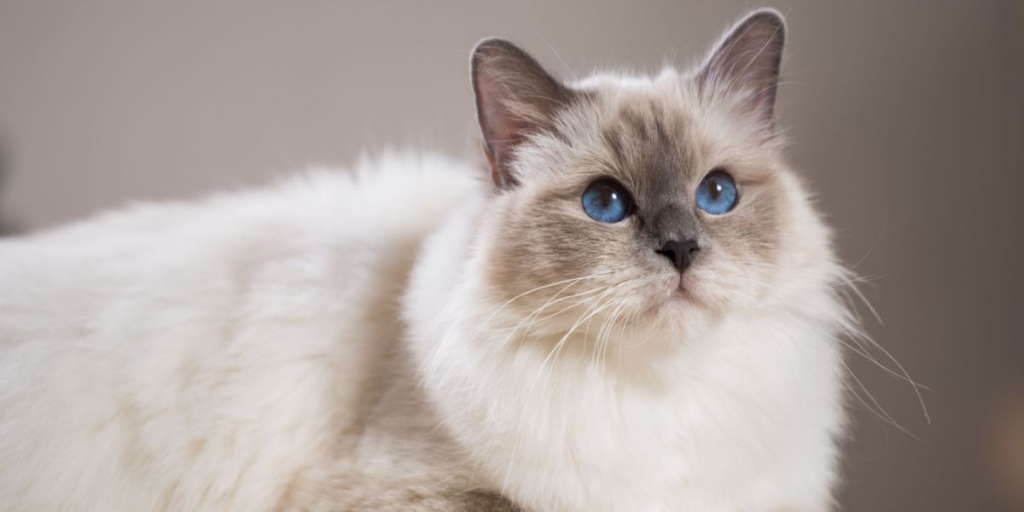Memory is the brain’s ability to store information and retrieve it when needed. We use our memory all the time: where we put our keys, the name of our childhood pet, the name of our co-worker’s partner, our old home phone number. All of this current information, past experiences, and random trivia is stored in the gray matter of the brain.
01 Cats have the capacity for both short-term and long-term memory, which is influenced by the cat’s experiences, important needs, and emotions.
02 Cats remember important things such as food, safety, and social interactions.
03 Cognitive dysfunction in cats is somewhat similar to Alzheimer’s disease in humans, with older cats experiencing memory loss, such as forgetting where the food bowl is, altered interaction with close companions, and altered sleep-wake cycles.
So what about our cats? Do they have the same memory as we do? Our naughty cat certainly seems to remember where the food bowl is and when to put it in! The field of animal cognition is constantly being updated as we learn new and interesting facts about our cats and other species.
What information do cats remember best (and why?)? And how does their memory differ from ours?
Types of memory

Cats use many different types of memory, including short-term memory, long-term memory, sensory memory, and episodic memory.
Memory is a complex and mysterious capacity of our minds. Why is it that I can remember the clothes I wore to my 6th birthday party, but can’t remember the password to the online account I just created? There are many different types of memory, and the brain pathways required to activate them are slightly different.
Short-term memory deals with what is happening right in front of us, such as where we put our jumper or the price of groceries read out at the register. Short-term memory, also called “working memory,” is always active, always processing and using information. It lasts only a few seconds to a minute.
Sensory memory processes data from the environment we see, hear, and touch. It is very fast and provides immediate knowledge about the world as we experience it in real time, but it decays quickly.
Long-term memory can store large amounts of information for long periods of time. Short-term memory is activated primarily by the frontal and parietal lobes of the brain. Long-term memory requires the hippocampus, which “transforms” memories into more stable processes for storage. These memories can be stored for years.
Episodic memory is a form of long-term memory that allows us to remember specific events, such as a wedding, in detail.
- Cats and short-term memory

Cats’ working memory seems to decline faster than that of other mammals, as shown by studies.
There are several interesting studies on different types of memory in cats.
Short-term memory in cats is tested by object disappearance studies. The object is first shown to the cat, then taken away for a short time, and then returned. The results showed that the cats retained their ability to remember the object 60 seconds after it disappeared, but within the first 30 seconds, the accuracy of the memory rapidly declined.
Cats’ working memory appears to degrade much faster than that of other domestic mammals, such as dogs. This may be due to cats’ heavy reliance on rapid sensory memory, especially when hunting, to quickly analyze their environment and then move on.
Some simple everyday actions also require memory functions. For example, walking involves both short-term and sensory memory. Humans typically look at an object on the ground for a step or two before walking toward it, and even when they no longer actively look at the obstacle, they rely on short-term memory to get past it.
This is also true of cats, which have been shown to look at an object several steps ahead while walking. However, cats also form long-term memories by visually observing their environment.
- Cats and long-term memory

Cats are less able to recognize faces than dogs, but they are more likely to remember faces if they have direct and prolonged contact with people.
The way cats use long-term memory can be divided into different categories:
- Spatial memory: spatial memory: the way cats remember their surroundings. Cats are good at avoiding obstacles and can climb easily and successfully. This type of memory allows cats to remember the location of food bowls and favorite beds.
- Implicit memory: this may be instinctively acquired memory, such as hunting behavior or grooming, or acquired at a young age through interaction with cats in the same house.
- Explicit memory: This is memory that cats deliberately evoke, such as which family member they prefer to sleep with, remembering the way home, or recognizing the right family cat.
- Visual memory: they are not as good at recognizing faces as dogs. However, direct and prolonged contact with objects or presences is more likely to produce lasting memories.
Studies have shown that cats have episodic memory and are able to remember “what it is” and “where it is” when asked to examine a food container. Similar results have been found in dogs, where food is perceived to be important and a powerful trigger for memory.
What triggers memory in cats?

Long-term memories in cats can be resentful!
Cat memories tend to form in two ways. First, things that are very important to cats are more likely to trigger a memory. Food, water, toileting, hunting, sleeping, playing and companionship are all very important to cats. This is why cats remember where the toilet is, when and where the cat food appeared and how to recognize family members.
Secondly, memories can be triggered by emotions such as fear or pleasure. A negative experience, such as a fight with another cat in the garden, may cause a cat to associate a place in the garden.
Long-term memories of your cat may cause resentment! On the positive side, your cat may be waiting for you by your favorite chair.
Can Cats Lose Their Memory?

Certain disorders, including cognitive dysfunction in cats, can affect cognition, problem-solving skills and memory.
In some cat breeds, memory loss can occur with age. Unlike other animals, such as dogs, a cat’s ability to use memory to find food does not decline with age.
However, older cats may suffer from diseases that affect their brain cells, which in turn affects their cognition, problem-solving skills, and memory. Cognitive dysfunction in cats is similar in some ways to Alzheimer’s disease in humans, affecting the cat’s brain and causing a variety of symptoms.
These symptoms include significant memory loss, such as forgetting where the food bowl is, changes in interactions with companions, and altered sleep-wake cycles.
Cats and Memory: Summary

Cats tend to cling to the memories that are most important to them, such as food, safety, and social interactions.
Cat owners will not be surprised to learn that cats have both short-term and long-term memory abilities. These memories change in response to the cat’s experiences, needs, and emotions. These memories may change the cat’s behavior. Cats tend to retain memories that are important to them, such as food, safety and socialization.

